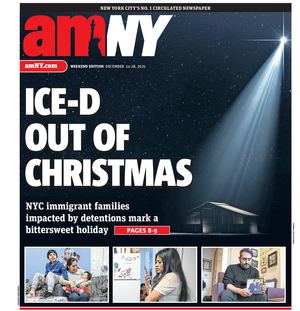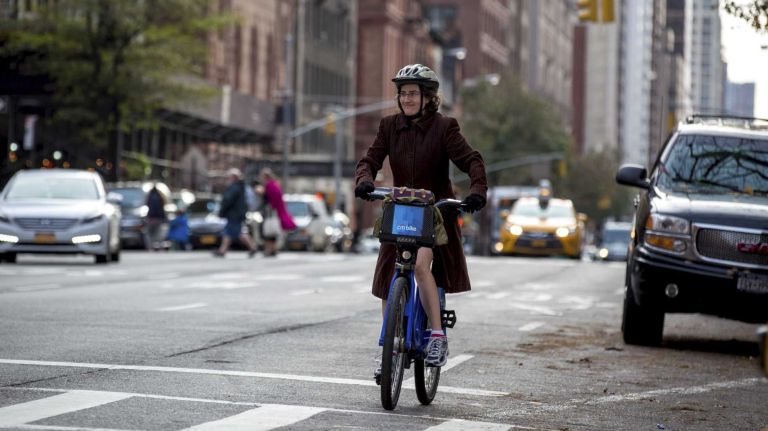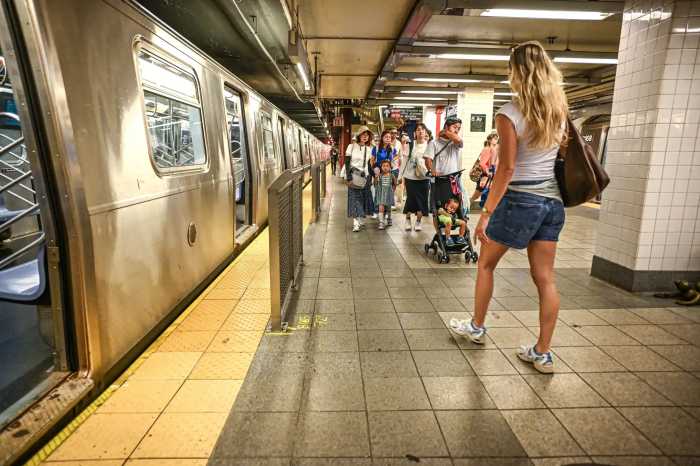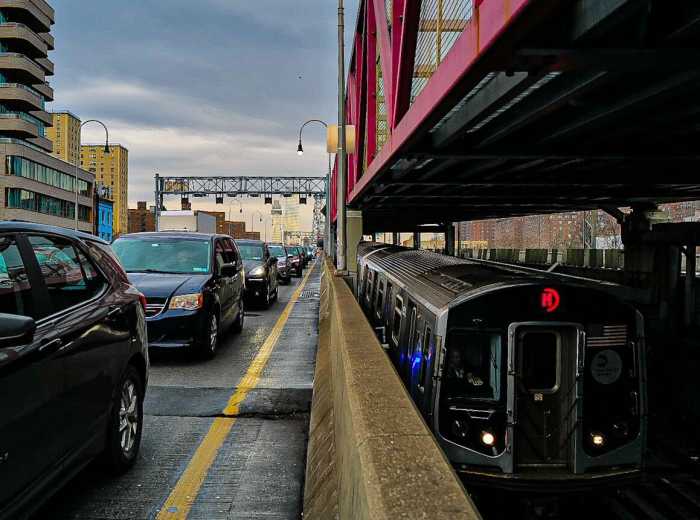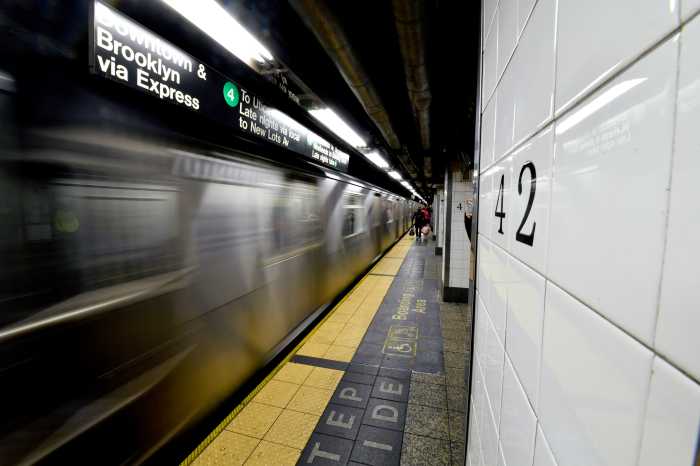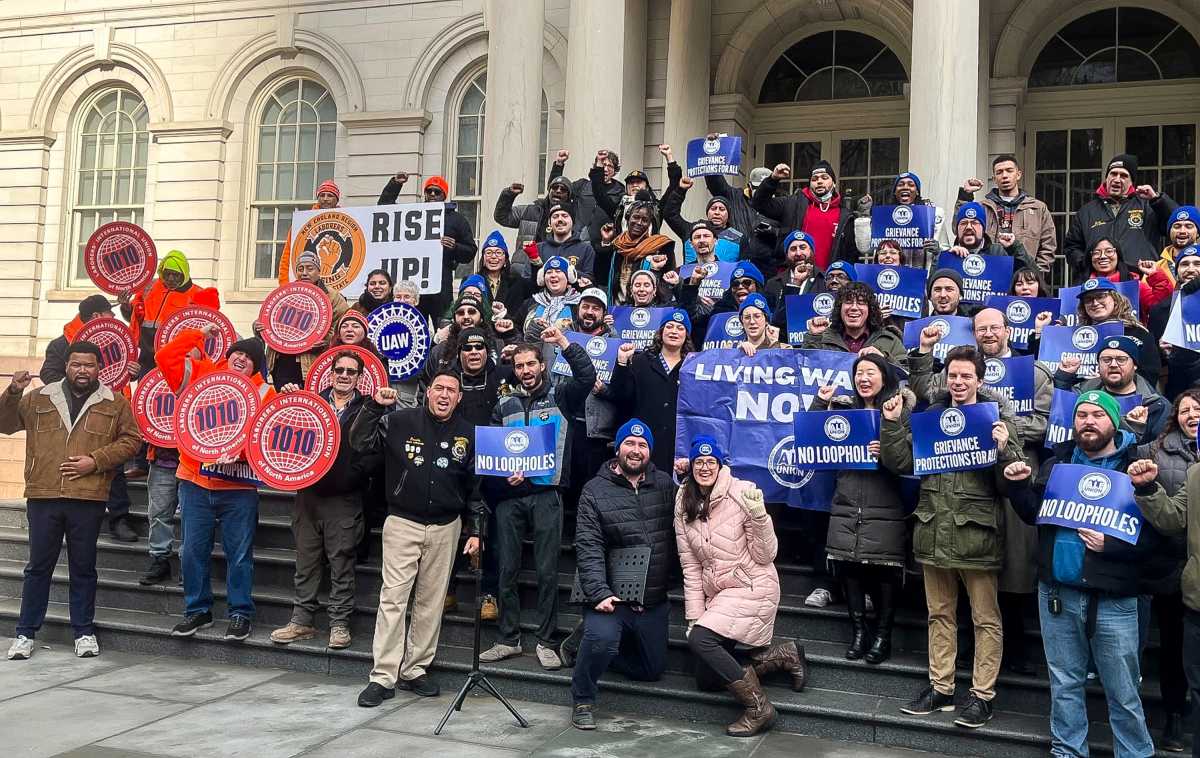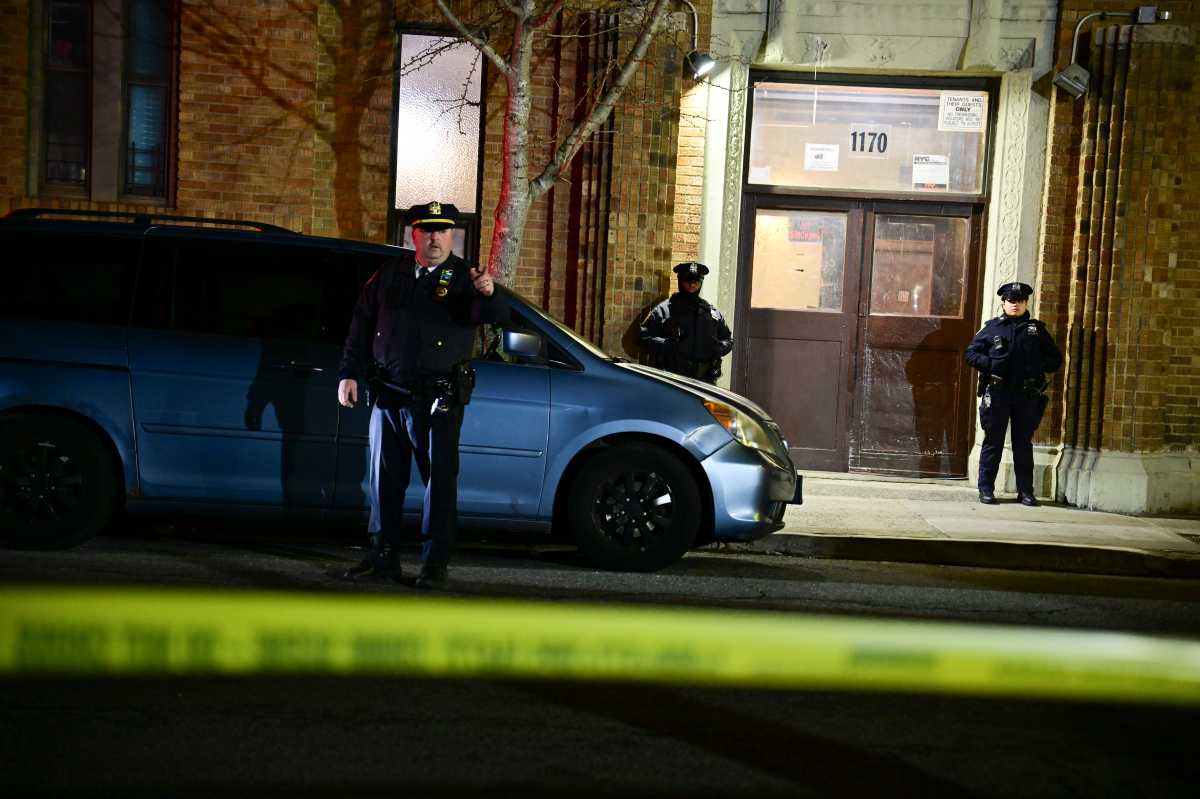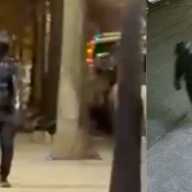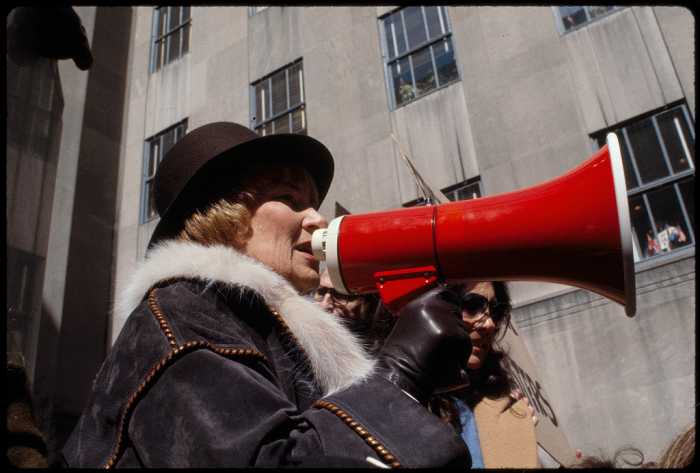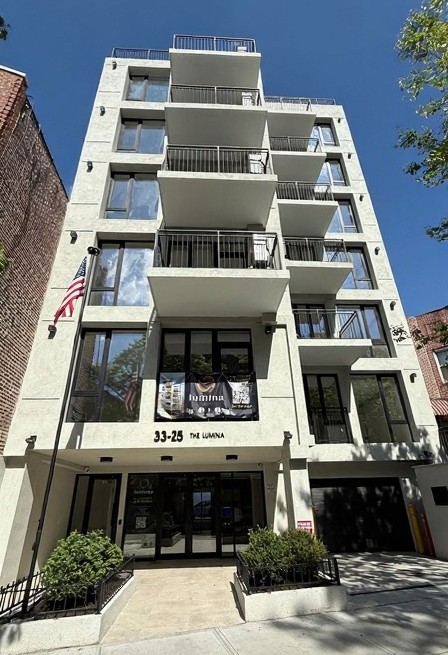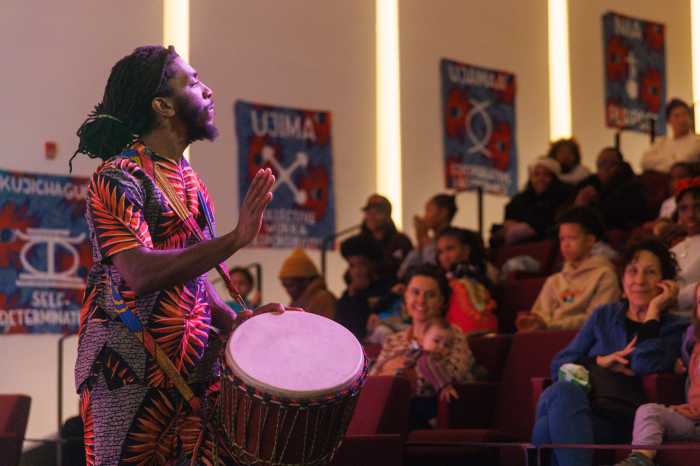
A busy Upper West Side avenue would lose 25% of its parking spaces if a proposed street redesign is approved that includes a nearly two-mile protected bike lane, left-turn lanes and pedestrian islands, according to the city’s Department of Transportation. Residents are divided on the plan, which officials say would save lives and move passengers from yellow cabs to Citi Bikes.
The Amsterdam Avenue lane would be used by cyclists heading uptown on nearly 40 blocks between 72nd Street and 110th Street, and complement an existing bike lane on Columbus Avenue that was built in 2010 and has since expanded.
The DOT overhaul, which could happen as early as next spring, would slash travel lanes from four to three on the commercial thoroughfare. Two existing parking lanes would be significantly changed — one would have a pedestrian island added to it, while the other would be converted into strictly paid commercial parking. Some intersections would also get dedicated space for left turns.
The proposal follows the introduction of Citi Bike stations to the neighborhood this fall, adding an influx of cyclists and taking up parking spaces. The stations currently go up to West 86th Street, and will eventually go up to 130th Street, officials said.
The DOT studied the volume of bikes on Amsterdam Avenue, between 85th and 86th streets, and found the number of cyclists on that street rose 180% between October 2007 and October 2015 — from 217 to 609 bikes during a 12-hour period.
Safety is a significant concern on Amsterdam Avenue for pedestrians, cyclists and drivers, officials said. Between 2009 and 2013, there were 513 traffic-related injuries, including nearly 300 drivers who were injured, and 157 pedestrians on Amsterdam. There were two deaths.
Sofia Russo, who lost her 4-year-old daughter Ariel in 2013, was thrilled about the proposed redesign. “It makes me feel so grateful from the bottom of my heart,” she said. “It’s going to save lives.”
There are 22% fewer pedestrian injuries on streets with a protected bike lane in Manhattan than streets without them — a historically low number, according to the DOT. And overall crashes with injuries in these lanes is down 17%.
There are several challenges of adding a bike lane to Amsterdam Avenue, including the heavy use by trucks on the avenue, who take it to make deliveries.
“It feels more like a highway than a local neighborhood street,” said Sean Quinn, an acting co-director of safety improvement projects at the DOT.
Quinn said that the current design of Amsterdam Avenue encourages bad driver behavior, and that an agency analysis found almost 60% of cars on the road are speeding during off-peak times.
Upper West Side residents had strong reactions to the proposal during a packed community meeting held at a local church.
Joseph Bolanos, president of the Park West 76th Street Block Association, said West End Avenue or Central Park West would be a much better fit for a bike lane than a major commercial thoroughfare like Amsterdam Avenue. He said he has been attending public meetings for years about bike lanes, and didn’t think the DOT would seriously consider input from the community.
“Instead of working with the community, they’re steamrolling us,” he said.
The street redesign, Bolanos said, would worsen traffic jams.
“They are creating congestion,” he said. “What about the pollution you are creating? This is a hammer and fist government. This is not representative, this is not inclusive.”
Upper West Side doorman Ricardo Medina, 48, also said he was concerned about the proposed redesign’s impact on parking, and said he drives to work from Brooklyn.
“I think it’s terrible because it doesn’t do anything for street safety, less parking just inconveniences people,” he said. “The city is making it harder and harder for people to drive.”
Marlene Molinoff, a 74-year-old writer, said garage parking rates were already at $750 a month in the neighborhood. She uses a valet service that costs $400 a month for ten round-trips. “Parking up here is just too hard,” she said.
Other residents strongly backed the redesign of Amsterdam and felt it would make it safer.
“This seems like weighing a loss of parking versus a loss of life,” said Julia Kite, an Upper West Side resident and cyclist who is a policy and research manager for Transportation Alternatives, during the meeting.
“There is safety in numbers — the more people who cycle, the safer cycling is — so if this protected lane can encourage less experienced cyclists to ride, it’s better for everybody,” she added.
Armando Contreras, a 36-year-old busboy who lives on West 50th Street, said the new lanes would only work for cyclists if people respect them and stay out of them. “On crowded streets, it’s like not having a bike lane at all,” he said. “But for this area that is a little more quiet, it would be nice to have some more lanes.”
Peter Yuskauskas, 27, said he often cycles uptown on the Upper West Side avenue and manages the Master Bike Shop on West 72nd Street. “A bike lane on Amsterdam would definitely help me feel more at ease,” he said.
“A lot of the people I sell bikes to complain about not feeling safe riding around the city, a bike lane like this could help them feel better about using a bike to get around.”
Beleaguered yellow cabs, already decimated by apps like Uber, could face competition from the proposed protected lane. There are more than 16,000 taxi trips within the Upper West Side between 4 and 7 p.m. on weekdays, and they are largely short, 1.5 miles or less, officials said.
“There is a big potential for a protected lane to shift taxi trips to Citi Bike,” said Quinn.
Some residents were skeptical, though, that passengers taking cabs would bike as an alternative.
“That’s totally absurd,” said Bolanos.
